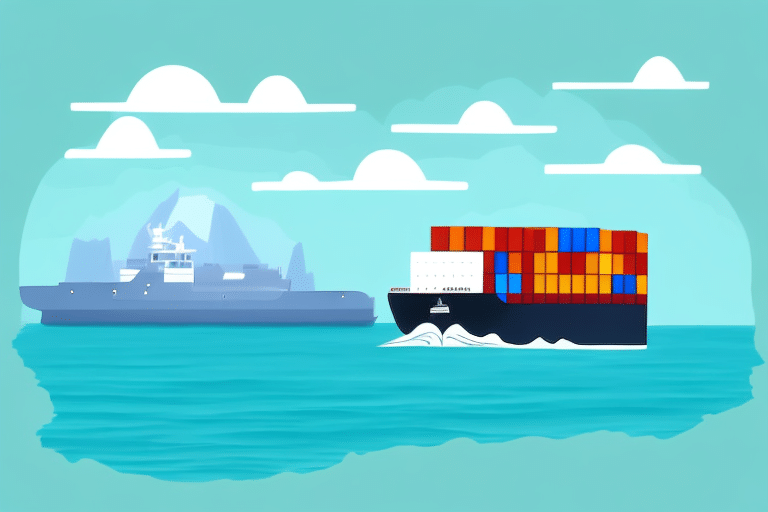Understanding Shipping Insurance: Protecting Your Goods and Your Business
Shipping goods involves various risks, including damage in transit, lost items, and delays. These risks can lead to significant financial losses for businesses, making shipping insurance an essential safeguard. Shipping insurance provides financial protection against these uncertainties, ensuring that your shipments are covered in case of unforeseen events. In this article, we will explore the intricacies of shipping insurance, including factors that influence rates, types of coverage available, and strategies to maximize value.
What is Shipping Insurance and Why It’s Essential
Shipping insurance is a protection policy that covers the loss or damage of goods during transit. It is particularly vital for businesses that handle high-value merchandise or engage in international shipping. While shipping companies offer basic insurance, it often only covers a fraction of the shipment's value. Therefore, purchasing comprehensive shipping insurance ensures full financial protection.
According to the International Federation of Freight Forwarders Associations, global trade volume surpassed $32 trillion in 2022, highlighting the critical need for robust shipping insurance to mitigate associated risks.
Key Factors Influencing Shipping Insurance Rates
1. Mode of Transportation
The mode of shipment significantly impacts insurance rates. Air freight is generally more expensive to insure compared to ocean or ground transport due to higher speed and value of goods typically shipped by air.
2. Shipment Value
Higher shipment values attract higher insurance premiums. Accurate valuation of goods is crucial to ensure adequate coverage without overpaying.
3. Destination and Origin
Shipping to or from regions with high rates of theft or natural disasters can increase insurance costs. For instance, shipping to areas prone to hurricanes may require additional coverage.
4. Type of Goods
Fragile or sensitive items like electronics, perishable goods, or hazardous materials may incur higher insurance premiums due to the increased risk of damage or loss.
5. Shipping Distance and Weight
Longer distances and heavier shipments generally result in higher insurance costs due to the increased likelihood of incidents occurring during transit.
Types of Shipping Insurance Coverage
1. Carrier Liability Insurance
This basic coverage is often included by shipping companies and covers damages or losses while the shipment is in the carrier's custody. However, it usually has low coverage limits.
2. All-Risk Coverage
All-risk insurance offers comprehensive protection, covering a wide range of potential damages or losses throughout the entire shipping process, including loading and unloading.
3. Named-Perils Coverage
Named-perils policies cover specific risks such as theft, fire, or water damage. This type of insurance allows businesses to tailor coverage based on the unique risks associated with their shipments.
4. Supply Chain Disruption Insurance
Some insurers offer additional coverage for supply chain disruptions, compensating for lost income or delayed shipments caused by unforeseen events like natural disasters or political instability.
The Importance of Accurate Shipment Valuation
Accurate valuation of shipments is essential for determining appropriate insurance coverage and premiums. Overvaluing can lead to unnecessarily high premiums, while undervaluing may result in insufficient coverage and potential financial losses.
According to the American Bar Association, precise shipment valuation helps in streamlined claims processing and avoids legal complications related to insurance fraud.
Navigating the Claims Process for Shipping Insurance
Understanding the claims process is crucial for effective use of shipping insurance. Here are the typical steps involved:
- Filing a Claim: Notify the insurance provider promptly and submit necessary documentation, including proof of loss or damage.
- Investigation: The insurer examines the claim details, assesses the extent of loss or damage, and verifies the validity of the claim.
- Settlement: After approval, the insurer reimburses the insured based on the policy terms, which may include the value of the goods and shipping costs.
It's important to document all shipment conditions thoroughly, including photographs and detailed records, to support your claim effectively.
Choosing the Right Shipping Insurance Provider
1. Assess Financial Stability and Reputation
Select a provider with a strong financial standing and a reputable track record for paying claims promptly. Check ratings from agencies like AM Best to evaluate insurer reliability.
2. Evaluate Coverage Options
Ensure the provider offers comprehensive coverage tailored to your specific shipping needs, including options for international shipments and high-value items.
3. Compare Rates and Fees
Obtain quotes from multiple insurers to compare premiums, coverage limits, and additional fees. Transparent pricing without hidden charges is essential for cost-effective insurance.
4. Customer Service and Support
Opt for providers known for excellent customer service and efficient claims handling. Positive reviews and testimonials can provide insights into the provider’s service quality.
Strategies to Save on Shipping Insurance
1. Bundle Shipments
Combining multiple shipments can often qualify you for bulk discounts and higher coverage limits at reduced rates.
2. Increase Deductibles
Opting for a higher deductible can lower your premium costs. However, ensure that the deductible amount is manageable in the event of a claim.
3. Optimize Packaging
Proper packaging reduces the risk of damage during transit, potentially lowering insurance premiums. Use durable materials and secure packing techniques to protect your goods.
4. Partner with Shipping Companies Offering Discounts
Some shipping companies provide discounted insurance rates when you use their services. Explore partnerships that offer bundled shipping and insurance solutions for better savings.
Common Mistakes to Avoid When Purchasing Shipping Insurance
- Under-Insuring Shipments: Failing to accurately value your goods can lead to insufficient coverage and financial losses.
- Neglecting Policy Details: Not thoroughly reading the terms and conditions may result in unexpected exclusions and limitations during claims.
- Ignoring Mode of Transportation Risks: Different shipping methods have unique risks; ensure your policy covers the specific hazards associated with your chosen mode.
- Delaying Claim Filing: Promptly file claims to avoid complications and ensure timely reimbursement.
Avoiding these mistakes ensures that your shipping insurance effectively protects your business and assets.
Conclusion: Maximizing the Value of Shipping Insurance
Shipping insurance is a critical component of a robust logistics strategy, safeguarding your business against potential financial losses due to damaged or lost shipments. By understanding the factors that influence insurance rates, choosing the right coverage and provider, and implementing cost-saving strategies, you can ensure comprehensive protection without overextending your budget.
Stay informed about the latest trends and best practices in shipping insurance by consulting reputable sources and industry reports. This proactive approach will help you navigate the complexities of shipping logistics and maintain the integrity and profitability of your business operations.






















